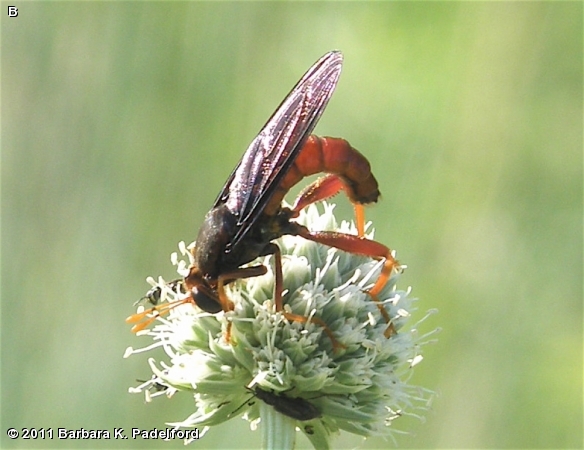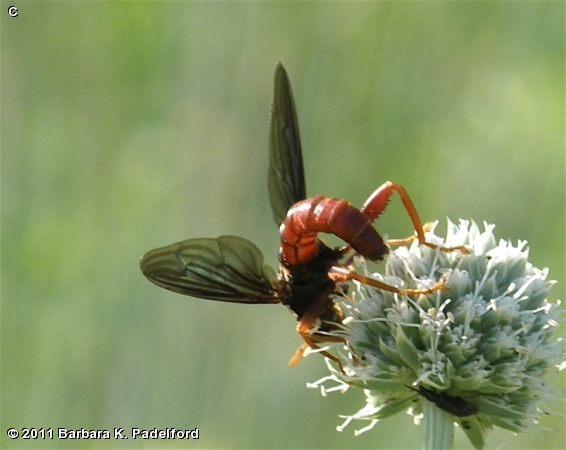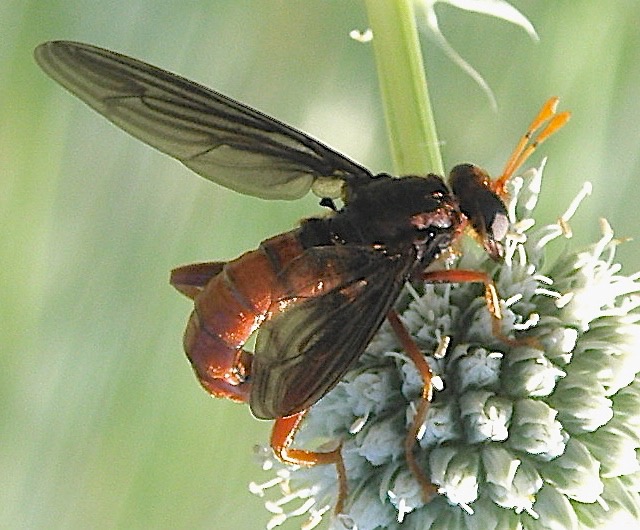
This large, colorful Mydas Fly is approximately 1.5 inches (38 mm) long. The antennae are bright golden-orange with a narrow black mid-band. The eyes are large and black. The thorax is dark brown, and the abdomen is red and elongated. The wings are smoky brown. The legs are entirely red. This Mydas fly was identified to species by James A. Bess.
The frequency of occurrence is unknown. The individual shown here was photographed at Camp Brewster, Fontenelle Forest on July 19, 2011. This species appears to be rare and is found in tallgrass prairies. Its preferred nectar source is Rattlesnake Master, Eryngium yuccifolium. The original specimen was collected on July 17, 1922 in Hope Arkansas and was described by Johnson in 1926. Jim Bess rediscovered the species in 2002 nectaring on Rattlesnake Master in a tall grass prairie in northwest Indiana.
These large flies are wasp mimics. They are harmless and do not sting. Eggs are laid in soil or dead wood with beetle larvae. The larvae are predaceous on the larvae of scarab beetles. There are 19 species in the genus Mydas in North America.
Disclaimer: The content of NatureSearch is provided by dedicated volunteer Naturalists of Fontenelle Forest who strive to provide the most accurate information available. Contributors of the images retain their copyrights. The point of contact for this page is: Loren Padelford.



